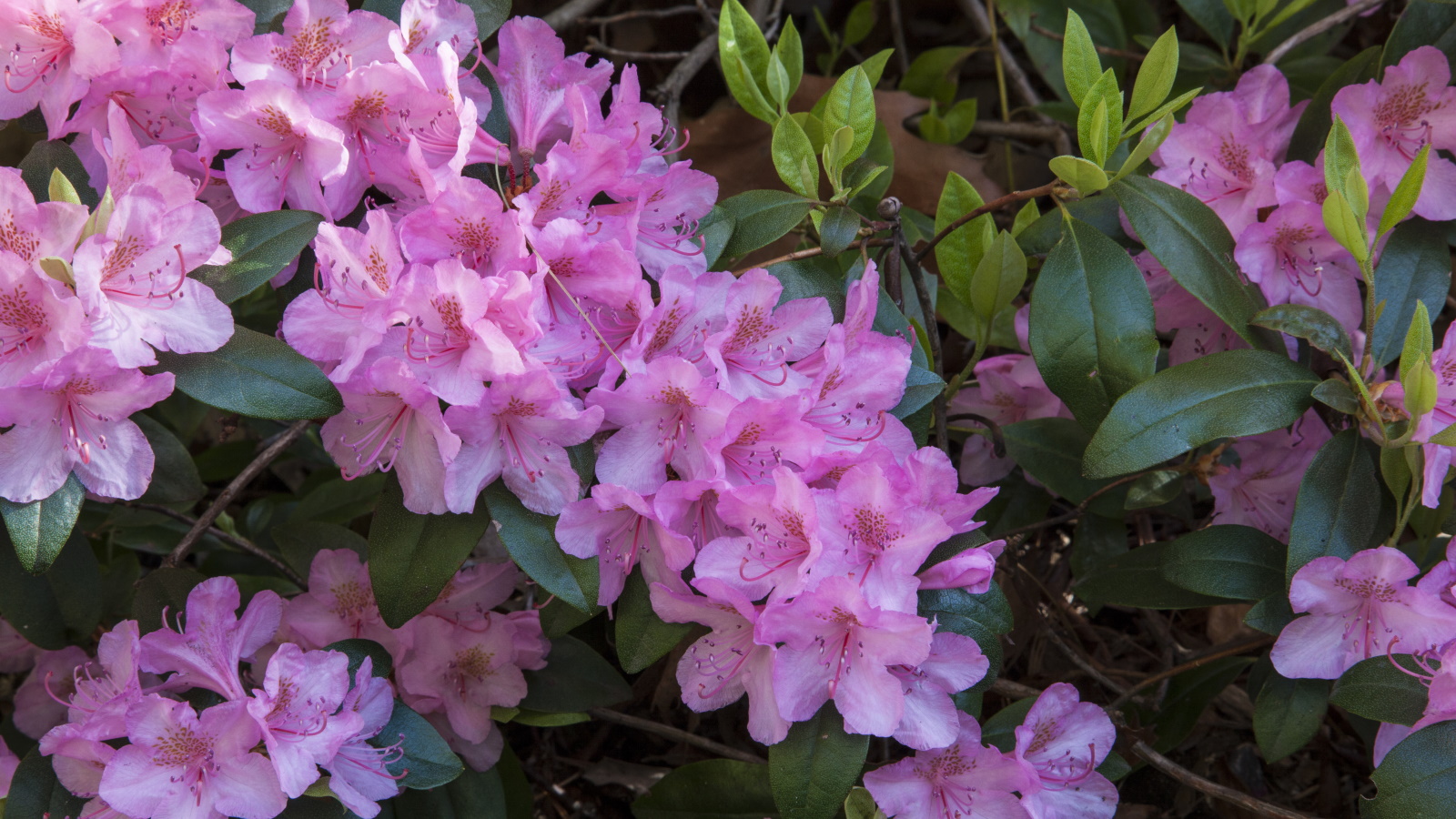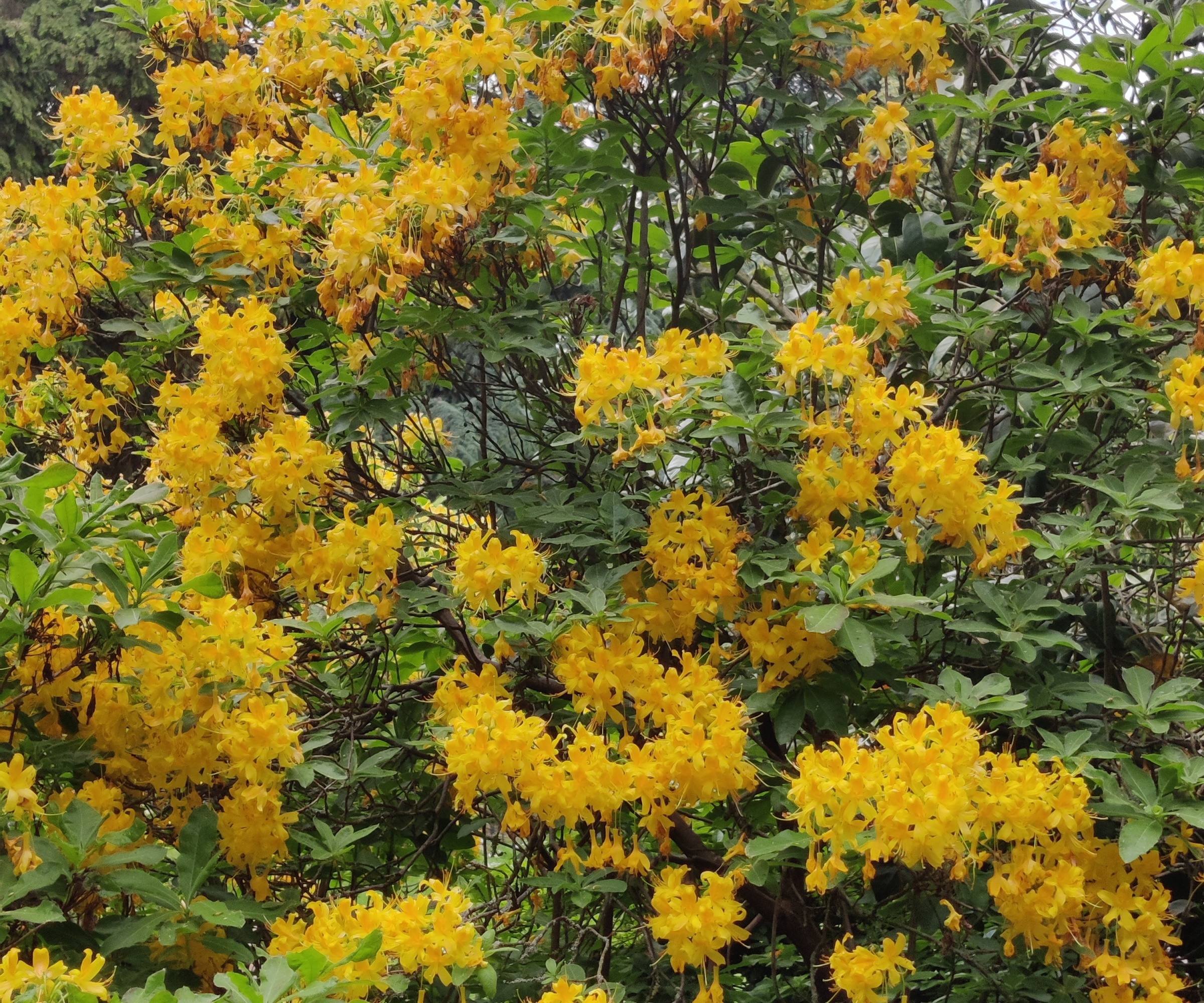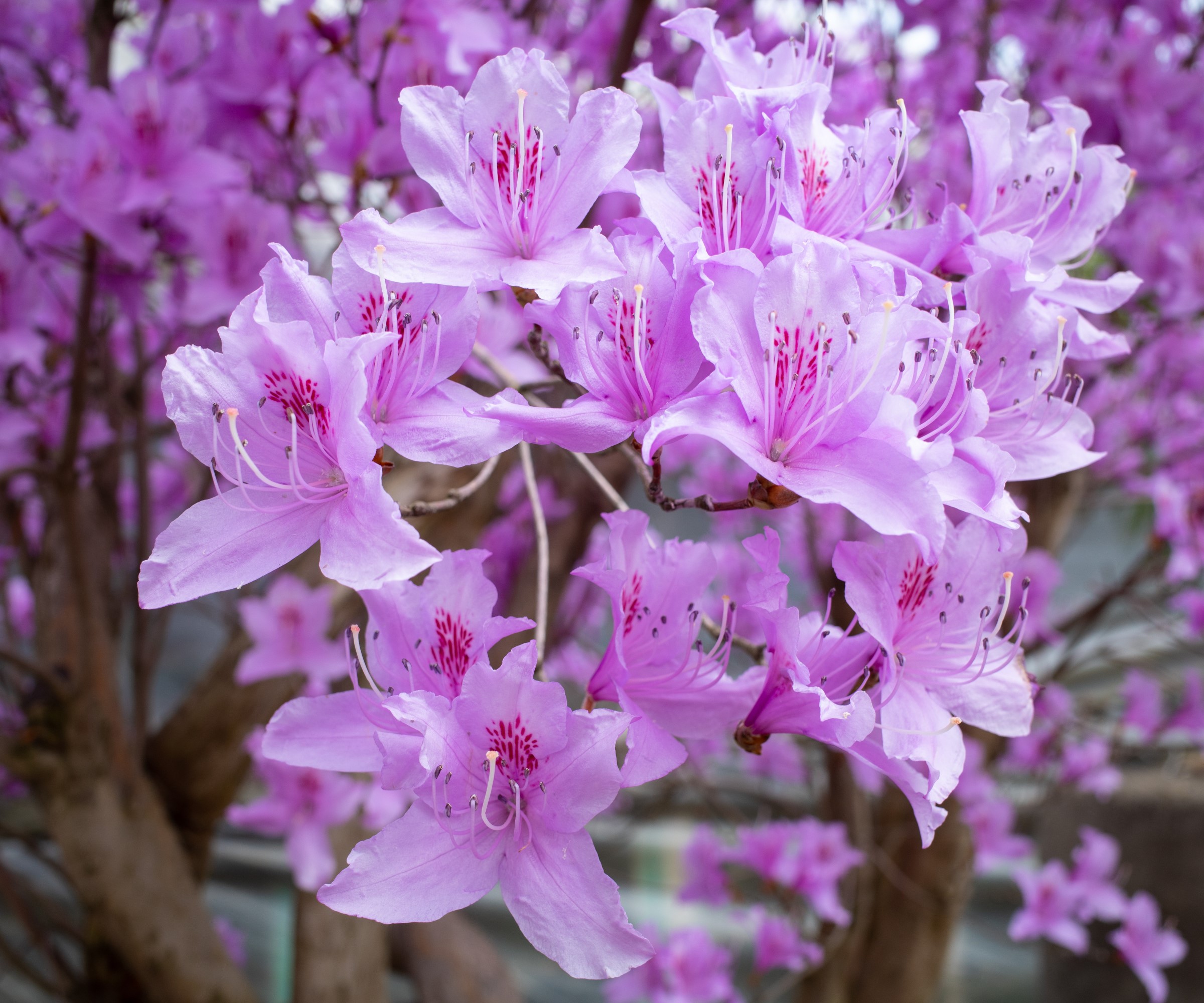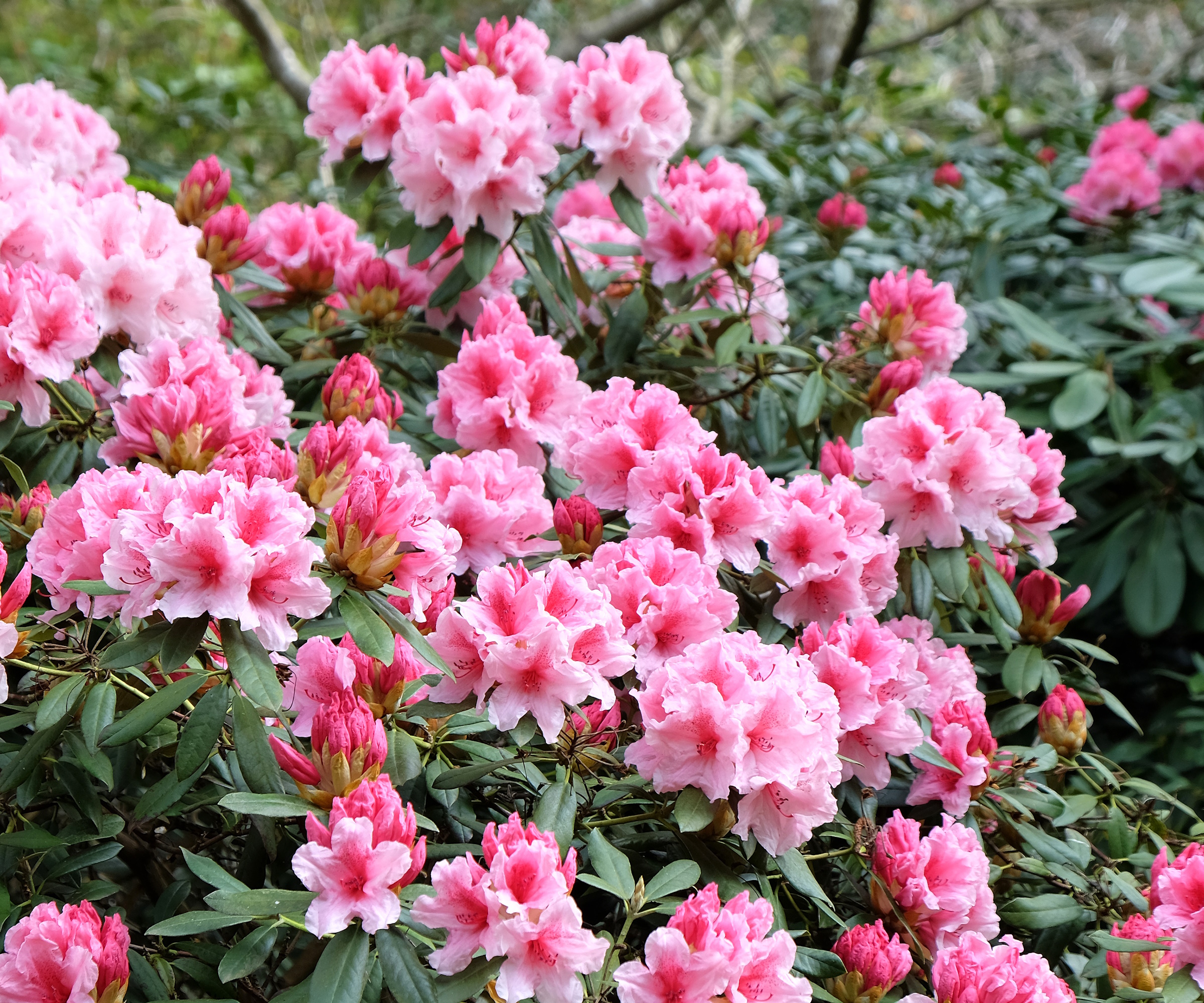
Rhododendrons and azaleas are prized for their vibrant blooms, flowering on bushy, upright growth typically thriving in wooded areas. Azaleas are part of the Rhododendron genus, made up of acid-loving shrubs that steal the show in spring and summer.
As a gardener who has previously worked at several gardens across the UK and Italy, I have cared for many different species of rhododendron. My favorite type - if I had to choose - would be Rhododendron luteum, otherwise known as the yellow azalea, as seen in the image below. This deciduous species has lightly scented, golden-yellow flowers and when grown in a woodland garden, it is unmistakable.
While you might be confident regarding how to grow rhododendrons, especially as these shrubs are renowned for being hardy plants that are easy to grow, there is sometimes uncertainty as to whether or not these plants require deadheading. Here, I share everything I know about caring for these flowering shrubs after blooms fade, to ensure that your plants continue to look their best.

Is it necessary to deadhead azalea and rhododendron flowers?
Deadheading spent flowers is an important job as part of the summer gardening checklist. Removing faded blooms is a quick and meditative task that will help improve the look of your shrubs and for some plants, can help to encourage repeat flowering.
In my experience, deadheading rhododendron and azalea blooms will not result in masses of new blooms, but it will help to keep your borders looking fresh and tidy. Often these shrubs have large blooms, and once they begin to brown, this can detract from other plants and flowers in the yard.
When to deadhead azalea and rhododendron flowers

I would suggest regularly inspecting your shrubs once they begin to bloom. While this will vary from species to species, most will flower at some point between early spring and early summer. Flowering can also be determined by your local climate and US hardiness zone.
Flowering will typically last for two weeks, although I have known some species to bloom for much longer, and some to bloom for just a few days.
Deadheading is best done as soon as flowering is finished. Faded blooms can remain on the plant for a week or so, but as they begin to wither and brown, they will quickly become unsightly.
As a gardener, I like to observe the entire plant lifecycle, and while there is beauty in watching plants bloom and then fade, browning petals are not ideal for this time of the year. Come fall, this would be acceptable, but during spring and summer, we all want our yards to remain verdant and colorful.
Felco snips are ideal for all pruning and gardening tasks. These pruning shears are designed to offer optimum comfort, as the shock absorbers, and are designed for gardeners of all abilities.
How to deadhead azalea and rhododendron flowers

While deadheading rhododendron flowers will have little impact on the health or performance of your plants, I would recommend doing so for aesthetic reasons. Fortunately for gardeners, this is a quick and simple task that can be done with little effort.
When deadheading, it is a good idea to use clean pruning shears. While you can gently twist and remove faded flowers with your hands, it is often better to use some sharp secateurs, such as these shears available from Walmart, which will ensure you have a clean cut.
One common deadheading mistake is to damage the plant when removing flowers by tearing or ripping stems, so be careful to avoid jagged or messy cuts.
It is best to wait until the flowers have completely withered and are turning brown. You can then snip each flower stem without removing leaves from the shrub. In general, it is a good idea to do this regularly, so that spent blooms do not detract from healthy flowers that remain.
If your shrub is tall, consider using a telescopic pruning tool, available from Amazon, that will allow you to reach flower clusters that are in hard-to-reach places at the top of the canopy.
FAQs
Can I compost faded and deadheaded flowers?
Yes, you can dispose of rhododendron flowers by adding them to your compost heap. However, I would caution against adding any foliage. Leaves of these shrubs are often waxy, and thick, and can take a long time to break down.
It is a good idea to have a different compost pile for longer-term composting, but do remember that rhododendron and azalea foliage will create an ericaceous compost or mulch, that should only be used for acid-loving plants, such as camellias.
While deadheading rhododendron blooms will not result in repeat flowering, it will help to maintain a tidy and healthy aesthetic during the summer months. For more information on how to care for your plants, see our guide on how to prune rhododendrons, to keep your shrubs compact and healthy.







